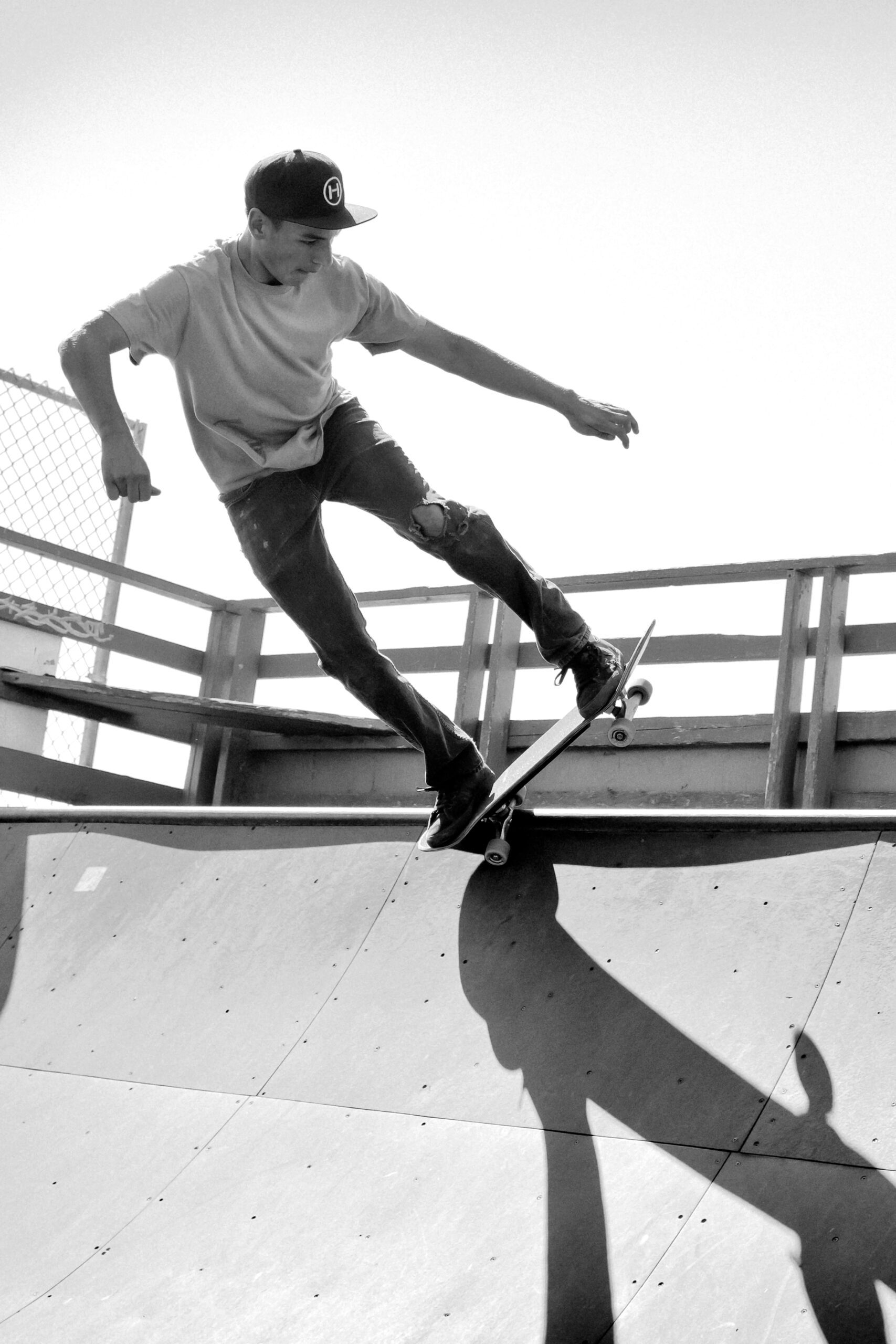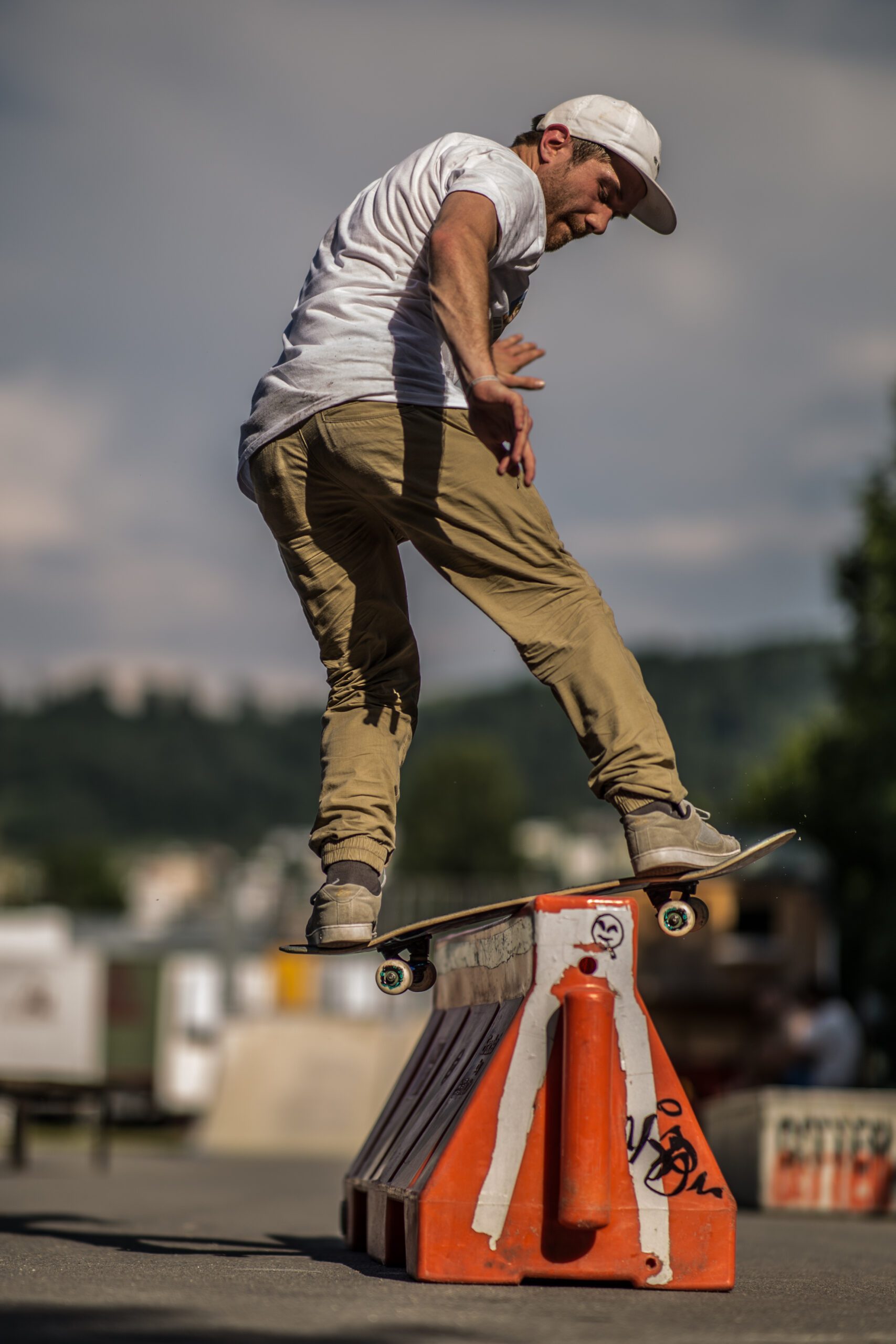Whether you’re a beginner or a seasoned skateboarder, honing your skills in carving and turning is essential for mastering the art of skateboarding. Perfecting your ability to carve and turn will not only improve your overall control and fluidity on the board, but it will also open up a whole realm of possibilities for tricks and maneuvers. In this article, we will explore various tips and techniques that can help you enhance your ability to carve and turn on a skateboard, allowing you to confidently navigate any obstacle in your path and truly enjoy the thrill of skateboarding. So, get ready to take your skateboarding skills to new heights as we delve into the exciting world of carving and turning!
How Do You Improve Your Ability To Carve And Turn On A Skateboard?
Skateboarding is a thrilling and challenging sport that requires a combination of skill, balance, and technique. One of the fundamental skills every skateboarder should strive to improve is their ability to carve and turn on their skateboard. Whether you’re a beginner or an experienced skateboarder looking to enhance your skills, here are some essential tips to help you improve your carving and turning abilities.

Choose the Right Skateboard
When it comes to carving and turning on a skateboard, selecting the right skateboard is crucial. Ensure that you choose a skateboard with the appropriate deck width, trucks, and wheels that suit your riding style and preferences. A wider deck offers more stability, making it easier to perform smooth and controlled turns. Additionally, softer wheels provide better grip, allowing you to carve with precision. Take some time to research and experiment with different skateboard setups until you find the one that feels comfortable and suits your needs.
Get Familiar with the Board
Before you start carving and turning, it’s important to become familiar with your skateboard. Spend some time simply standing on your board, getting a feel for its balance and responsiveness. Practice shifting your weight from heel to toe and vice versa to understand how it affects the board’s movement. Getting comfortable with your skateboard is the first step towards mastering carving and turning.
Work on Your Balance
Good balance is key when it comes to carving and turning. To improve your balance, practice standing on your skateboard with both feet parallel to the board and knees slightly bent. Start by finding a flat, open area where you can practice maintaining your balance. Slowly shift your weight from side to side, focusing on keeping your body centered over the board. As you become more comfortable, challenge yourself by performing small hops or pivoting on the balls of your feet while maintaining balance.
Learn Proper Foot Placement
Correct foot placement is essential for executing precise turns and carving effortlessly. For regular riders, place your front foot slightly angled with your toes pointing towards the skateboard’s nose. Your back foot should be positioned parallel to the tail, providing stability and control. If you ride goofy, reverse the foot placement. Experiment with different foot positions to find what works best for you, ensuring your feet feel comfortable and secure on the board.
Master the Basic Techniques
To improve your ability to carve and turn, it’s important to master the basic skateboarding techniques. Begin with the foundational movements, such as pushing, rolling, and stopping. Practice pushing off the ground with your back foot, rolling forward in a straight line, and gradually increasing your speed and control. Learn how to stop effectively using techniques such as foot braking or power slides. By mastering these basic techniques, you’ll lay a solid foundation for carving and turning on your skateboard.
Practice Turning on Flat Ground
The ability to turn smoothly on flat ground is a fundamental skill that every skateboarder should develop. Start by practicing wide, exaggerated turns while gradually decreasing the turning radius. As you improve, focus on using your body and shifting your weight to initiate and control the turns. Try to maintain a low and balanced stance while leaning into the turn, allowing the board to respond to your movements. Regular practice on flat ground will help you build muscle memory and improve your ability to carve with precision.
Perform Carves on Slopes
Once you’re comfortable with turning on flat ground, it’s time to take your carving skills to the next level by tackling slopes. Find a gentle hill or a skatepark with suitable ramps and transitions. Begin by starting at the top of the slope and gradually increase your speed as you descend. Practice carving from edge to edge, allowing the board to respond to your body weight shifts. Focus on maintaining a controlled speed, smooth transitions, and maintaining balance throughout. With consistent practice, you’ll develop the confidence and skills to carve and turn on various slopes confidently.
Utilize Your Body Movements
Carving and turning on a skateboard involves more than just moving your feet. Proper body movements and weight shifts are essential for executing fluid and controlled turns. As you initiate a turn, focus on engaging your upper body, shoulders, and hips in the direction you want to go. Lean into the turn and use your arms for balance. By incorporating your entire body into the movement, you’ll have more control and precision while carving on your skateboard.
Practice Sliding Techniques
Sliding techniques can add another level of style and control to your carving and turning abilities. One popular sliding technique is the Coleman slide, where you kick out the back wheels to create a controlled slide. This technique is useful for controlling your speed during fast descents or executing sharp turns. The key to mastering sliding techniques is practice, so find a suitable area with enough space and experiment with different techniques to find what works for you.
Develop Skill through Consistent Practice
Improving your ability to carve and turn on a skateboard requires consistent practice. Set aside regular practice sessions, focusing on specific techniques and areas you want to improve. Take advantage of skateparks, open spaces, or designated skateboarding areas that provide a safe and controlled environment for practicing. Challenge yourself by gradually increasing your speed, trying new tricks, and pushing the limits of your balance and control. Remember, practice makes progress, so stay dedicated and patient, and you’ll see your carving and turning abilities improve over time.
In conclusion, carving and turning on a skateboard is a skill that can be developed and improved with the right approach and consistent practice. Choose the right skateboard setup, get familiar with your board, work on your balance, master proper foot placement, and practice the basic techniques. Start on flat ground, progress to slopes, and experiment with body movements and sliding techniques. Remember to dedicate time to regular practice sessions and challenge yourself to push your limits. With determination, patience, and a friendly approach, you’ll soon find yourself carving and turning with confidence and style on your skateboard. Happy shredding!


